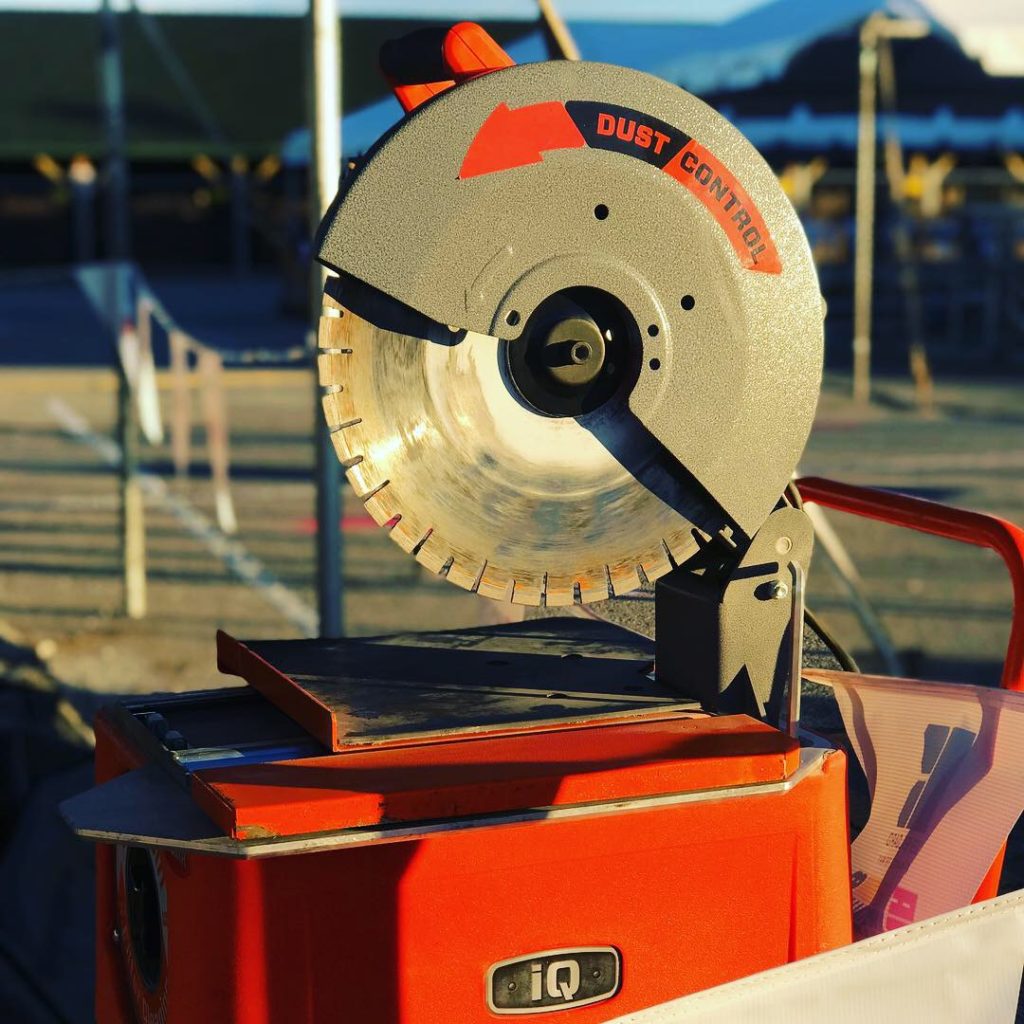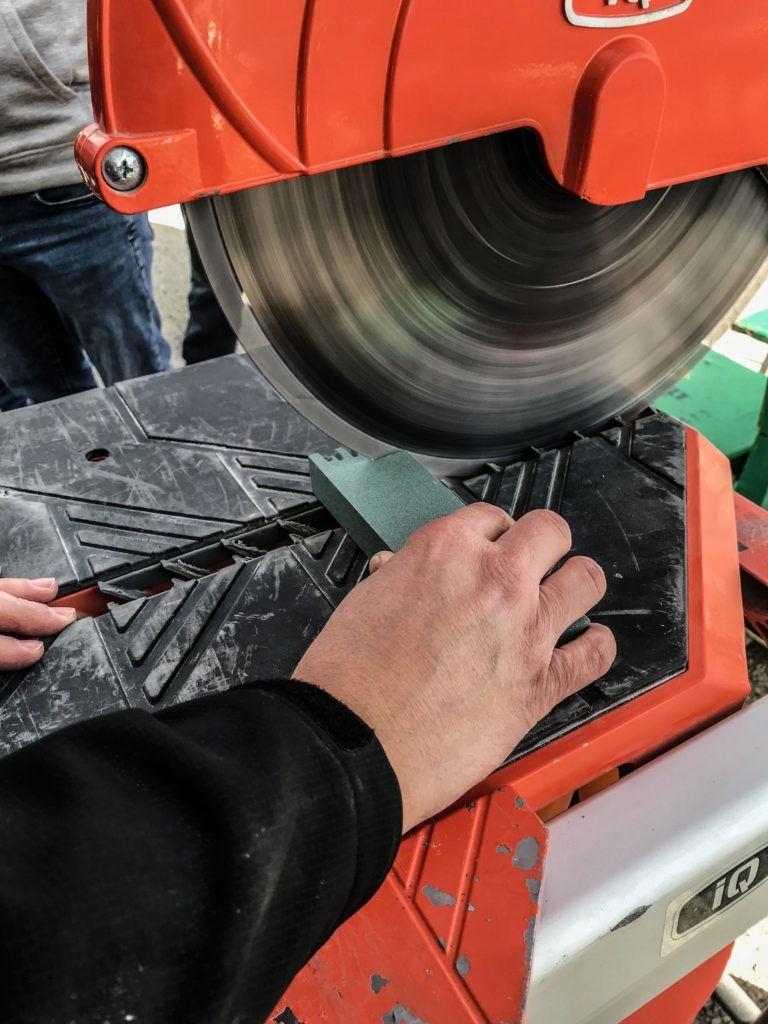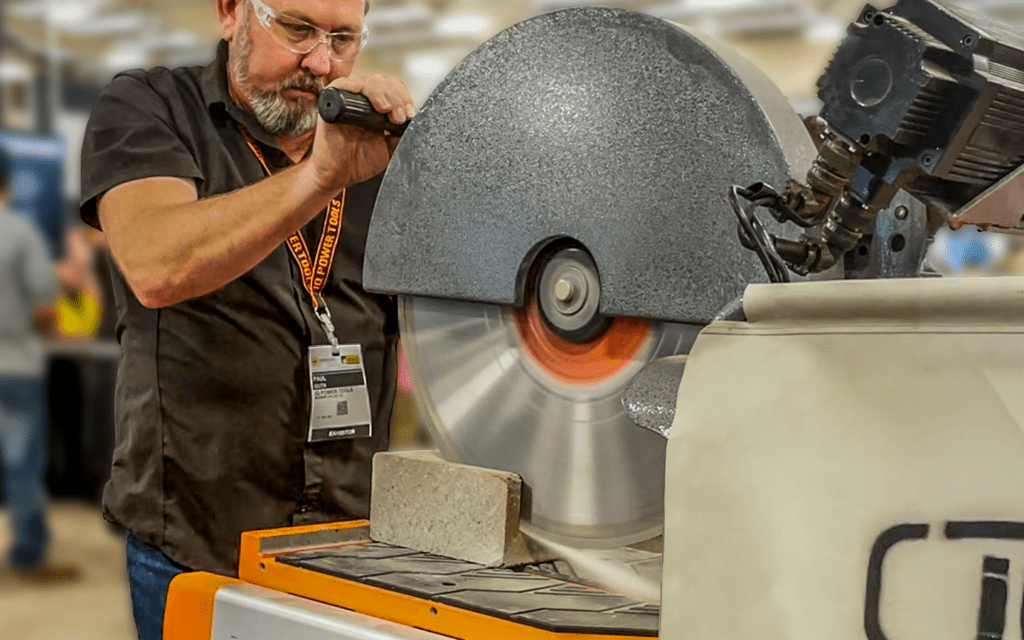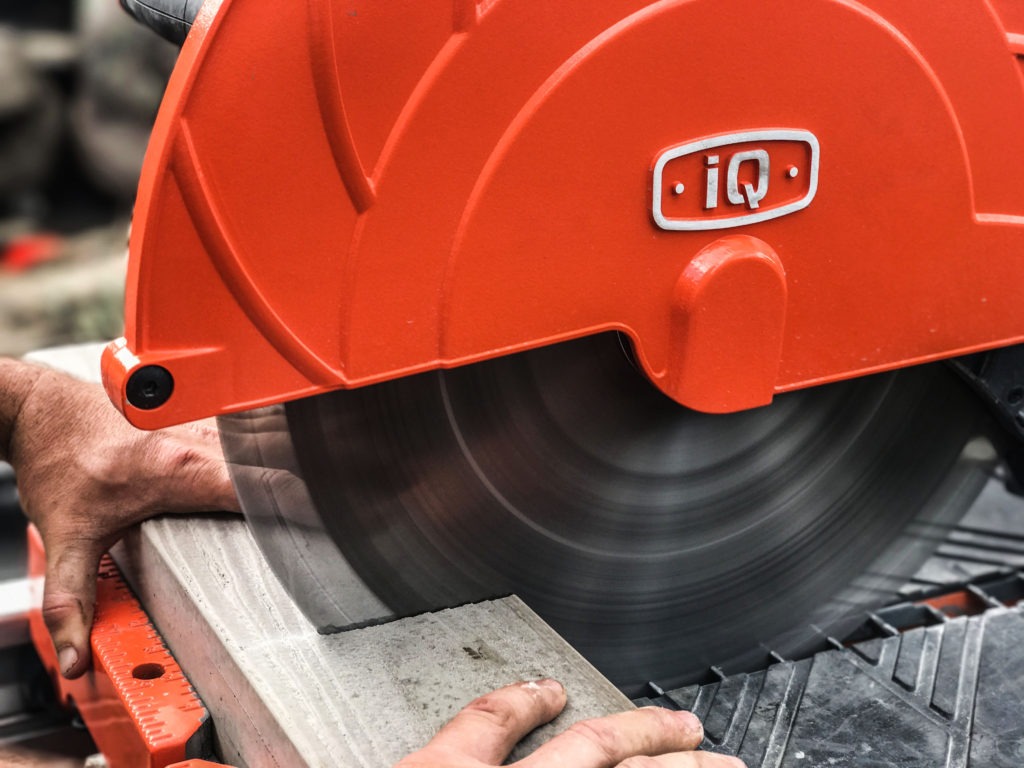Words: Paul Guth, iQ Power Tools
Photos: iQ Power Tools
It’s very basic. The headline above encapsulates the three major “must-knows” any contractor must be aware of before beginning to cut masonry or hardscape materials. Adhering to these maxims is very important today, as there are so many variables when it comes to your saw, the material you need to cut, and the diamond blade selection. A mason can be the most skilled saw operator, but if these guidelines are not heeded, that person is going to be working inefficiently and potentially creating a hazardous working condition.
A GOOD, WELL-MAINTAINED SAW WILL KEEP YOU IN AWE.
From the contractor’s standpoint, there are basically two types of saws used in the masonry world: stationary tables saws and handheld gas/battery saws. Tables saws are more of a precision and production type of equipment, characterized by material being taken to the saw, making cuts, and then transporting cut material to the installation area. These saws allow for a more precise cut, allowing for angles and more intricate precision cutting. Gas and battery-powered saws, also known as power-cutters, are generally handheld and allow for the saw to be taken to the material to be cut. These are ideal for working on scaffolds or for impromptu cutting as needed. Both types of saws can cut essentially all concrete products offered on today’s market. It’s important in both cases to know your saw’s horsepower rating and blade RPM. The saw manufacturer should be a good resource to make recommendations for your cutting application.

THE RIGHT BLADE WILL CUT IT. FASTER AND BETTER.
Now that you know your saw… know your blade. Today, most masons utilize the same saw for most jobs, being well aware of the importance of the blades they are using. Most often, the mason is cutting CMU (concrete masonry unit) concrete block or brick with a PSI of 2,000 to 4,000. These are the most common materials, and typically a mason will look for a blade designed to cut these materials that has good cutting speed and good blade life. These blades may be referred to as general purpose or combination blades because they are designed to cut a combination of materials within this PSI range. However, an important variable to this is knowing the local aggregate used in the concrete products. Some parts of the country have very hard aggregate or gravel used in making concrete products, such as in the Northwest and parts of the Midwest. In this situation, masons need to rely on local knowledge to select diamond blades that perform well cutting their local aggregate. The same is true when it comes to brick manufactured by different companies in different regions. Brick can vary greatly in density, ranging from 2000 psi to 15,000+psi. Rely on a good saw and diamond blade manufacturer to make recommendations for your local region. Most reputable saw and diamond blade manufacturers are spending the time and resources to develop diamond blades for different materials. For example, here at iQ Power Tools, we will make tens of thousands of test cuts developing and perfecting a blade matched to our machine’s HP and RPM for a specific material or region. We are constantly testing diamond blades and passing that knowledge down to our dealers to make sure the customer has good options selecting the right blade for the material he’s cutting. Selecting the right blade for the job is crucial and being properly matched to your saw is imperative.
Now to be candid, there are many ways to source blades these days. Telemarketers, online retailers, discount tool stores, and even the guy selling them out of the trunk of his car and their pricing might be amazing. But ask yourself, do these sellers know your saw specifications and the specific materials you’re trying to cut, or do they just want to sell you a blade? Getting your diamond blades from a respected, knowledgeable, and preferably regional tool expert will save you money in the long run. They can recommend the type of blade that works best with your saw on the material YOU are working with.

LET’S TALK BOND AND SEGMENT
Generally speaking, a soft bond blade is used to cut hard material, whereas a hard bond should be selected to cut softer material. The segment or tip of the blade is made up of a metal matrix with small diamonds placed randomly or arrayed within this metal matrix. The metal matrix is designed to cut a specific type of material and wear away at just the right rate to expose fresh diamonds that are cutting the material. A soft bond wears away faster to expose the diamonds faster, and a hard bond wears away slower, exposing diamonds slower and improving blade life. In a nutshell, this is how a diamond blade works, and finding the right balance is the key to consistent cutting performance.
If a blade is working correctly, it is:
- Cutting at a good speed
- Cutting consistently
- Should stay cool and not overheat.
Sometimes your blade may stop cutting even though you have noticeable segment left.
In this situation, the cutting layer of diamonds has been stripped away, leaving only metal matrix which will not cut by itself. What most people don’t realize is if there is still segment on the blade, then fresh diamonds can be exposed by using a dressing stone or some abrasive material to wear the metal matrix back and expose the fresh diamonds, 9 times out of 10, this can extend the life of a diamond blade.
KNOW YOUR SAW CUTTING OPTIONS: WET VS DRY.
We are all very familiar with wet cutting masonry saws, a technology that has been around for over 80 years. Wet cutting saws do a great job of cooling the blade and suppressing the dust, but they make a huge mess limiting where the saw can be set up. In some jurisdictions, wet slurry is considered hazardous waste and must be dealt with appropriately, which means creating settling pits and disposing of the waste slurry. Other drawbacks include stained block and brick, and in freezing environments, this presents even more challenges. And in this day and age, finding a supply of water and how we handle this precious resource is becoming very important. This is the essence of wet cutting – it’s messy! It’s a pain. And it can damage the environment around us
Dry cutting masonry saws with dust control, by comparison, is a relatively new technology and is the cleaner and more efficient option. Dry cut masonry saws with dust control have many advantages eliminating staining, slurry and the mess, allowing the saw to be set up close to where the work is taking place, and creating a more efficient jobsite. A good example is iQ’s recently introduced iQ1550 21.5″ Masonry Saw, which is a huge leap forward in masonry saw technology… this is not your grandfather’s masonry saw. There hasn’t been innovation for a 20″ masonry saw since the 1940s. We’ve eliminated the water, integrated automatic dust control, and made it more portable and easier to work with while maintaining the same cutting capabilities of a conventional 20″ masonry saw.

CUTTING TO THE CHASE.
Mason contractors are in a tough dynamic business environment. Investing in the most up-to-date, high-performance cutting tools and learning everything about using and maintaining them makes good business sense. In today’s work environment, mason contractors need every advantage possible to complete their projects efficiently and safely, and on budget. As they say, knowledge is power, so remember, know your saw, know your material, and know your blades. But above all, know your options.
